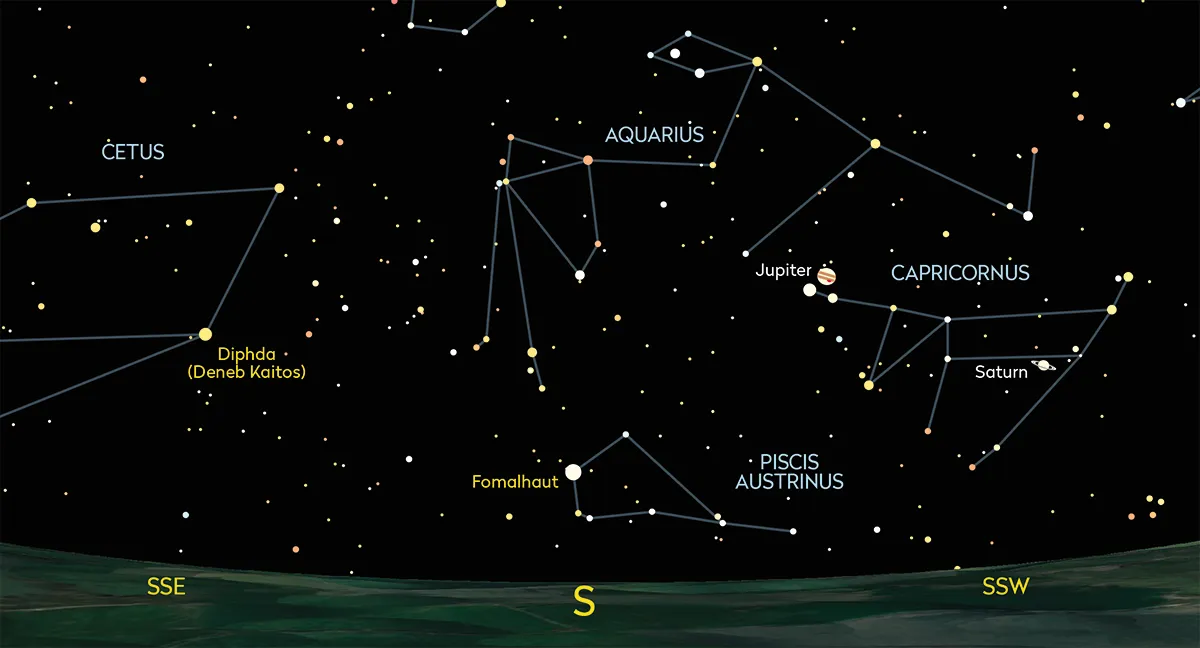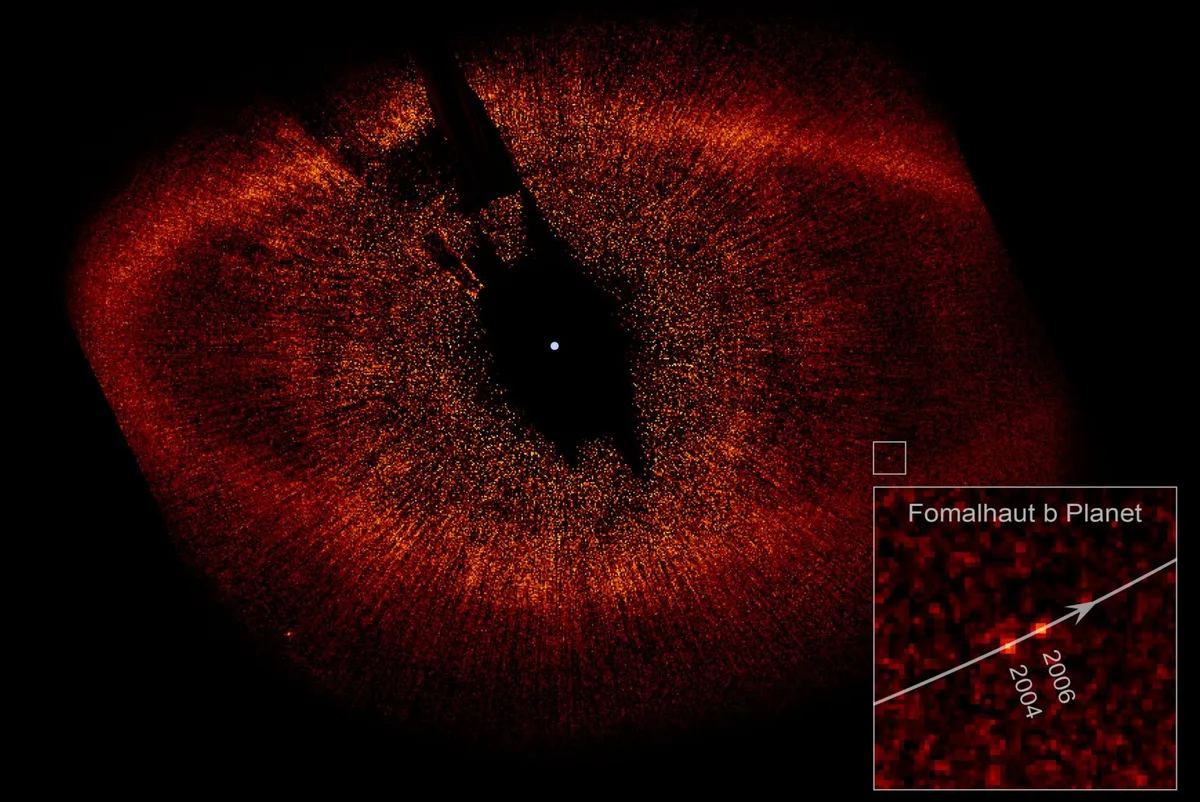The faint constellation of Piscis Austrinus is redeemed by its primary star Fomalhaut (Alpha (α) Piscis Austrini).
This star is quite special because it's the most southerly first-magnitude star visible from the UK.

Shining at mag. +1.2, Fomalhaut (commonly pronounced ‘fom–a–low’ or ‘fom-al-ha’) is very easy to miss because it’s located so far south in the sky.
Indeed, from the centre of the UK, it reaches only around 7° altitude when due south.
If you want to find it for yourself, you locate the star by extending the western side of the Great Square of Pegasus due south.

Facts about Fomalhaut
Piscis Austrinus represents the Southern Fish, Fomalhaut meaning ‘mouth of the southern fish’.
It’s a relatively close neighbour of the Sun at a distance of 25.1 lightyears and measures 1.8 times larger than our Sun.
It’s a white star of spectral class A3V, V indicating it’s a dwarf.
It has two 13th-magnitude dwarf companions: Fomalhaut B (TW Piscis Austrini), a K4-type dwarf, and Fomalhaut C (LP 876-10), a red dwarf of spectral type M4.

The star is also surrounded by several debris discs. In 2008, planet Fomalhaut b (subsequently named Dagon) became the first to be directly imaged in visible light.
However, follow-up observations suggest this is actually a dispersing dust cloud, the result of a massive planetesimal collision.
If you manage to capture images of the star or have any fond memories of observing it graze the horizon, let us know?
Share your images and observing experiences with us by emailing contactus@skyatnightmagazine.com.
This guide appeared in the October 2024 issue of BBC Sky at Night Magazine

